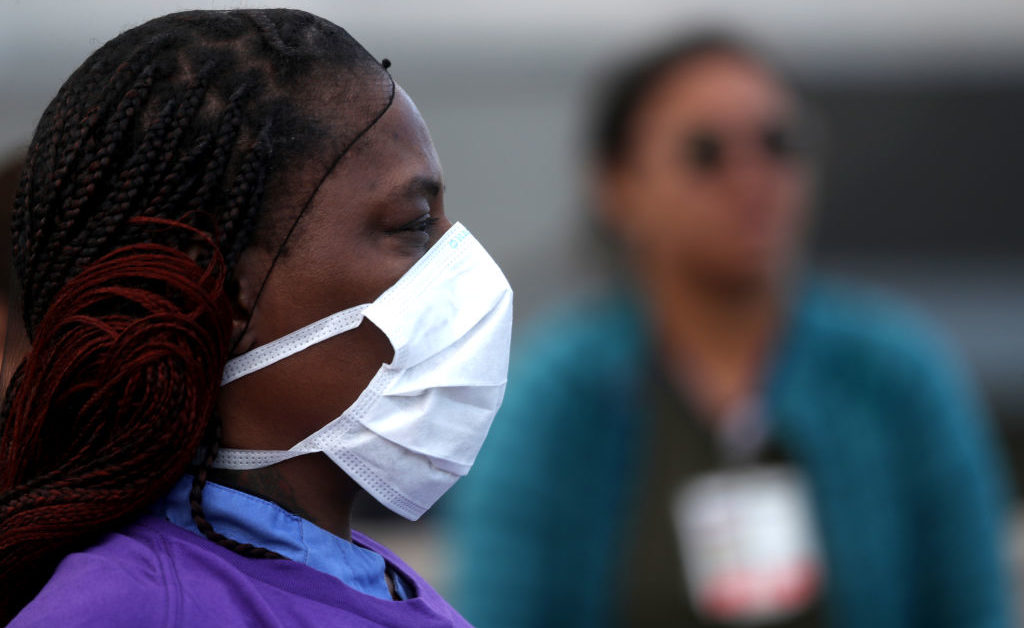The current pandemic is exposing — and exacerbating — already existing social inequalities. In this interview, Medical News Today spoke to Tiffany Green, assistant professor in the Departments of Population Health Sciences and Obstetrics and Gynecology at the University of Wisconsin-Madison, about COVID-19 and race-related health disparities.

Factors such as race, ethnicity, gender, and income, in combination with discriminatory attitudes, result in some groups of people taking the brunt of the pandemic to a disproportionate degree.
Emerging data show that in the United States, the COVID-19 pandemic is disproportionately affecting black and Latinx people, with some data indicating that American Indians, Alaska Natives, and other ethnic minority groups are also exposed to higher risks of serious illness from the new coronavirus.
A recent analysis that Yale University researchers led, for example, found that black people are 3.5 times more likely to die from COVID-19 than white people in the U.S. and that Latinx people are almost twice as likely to die compared with white people.
Furthermore, a recent report by the nonpartisan APM Research Lab found that in the U.S., black people are 2.4 times more likely to die from COVID-19 than white people.
In this context, we spoke to Tiffany Green, Ph.D., assistant professor in the Departments of Population Health Sciences and Obstetrics and Gynecology at the University of Wisconsin-Madison, about racial disparities in healthcare during COVID-19, as well as what steps are necessary to correct racial bias in the COVID-19 response.
With health economics and health services research as her primary interests, Prof. Green’s previous work has tackled topics such as the relationship between income disparities and co-ocurring chronic health conditions, racial disparities in access to healthcare, and the role of feature-based discrimination in driving health disparities among black Americans, to mention just a few.
MNT: Could you highlight some of the race-related inequities in health that the COVID-19 crisis has brought to light? Are there any inequalities that are specific to COVID-19 in terms of access to resources, testing, treatment options, and so on?
Those of us who work in the health disparities space are saddened but not surprised at the race-based disparities that the COVID-19 crisis has brought to light. These disparities have always been there, and we have been talking about them for years. However, these inequalities cannot be ignored against the backdrop of a pandemic.
The first thing to point out is that the racialized class and occupational structures of the U.S. are to blame for the fact that many people of color (POC) are far more likely to be exposed to COVID-19.
Due to institutional discrimination (both historical and present day), black and other people of color are more likely to end up in occupations that leave them simultaneously at higher risk of exposure and with a relative lack of resources to access treatment.
For example, non-Hispanic (NH) black and Hispanic Americans are more likely to end up in occupations that we have newly deemed “essential,” including, but not limited to, retail work (e.g., grocery stores), sanitation, farming, meatpacking plants, frontline healthcare workers in nursing homes, early child care educators, etc. Each of these occupations is critical in allowing the rest of society to stay at home and “flatten the curve.”
Yet, it is nearly impossible to engage in physical distancing in these occupations, which contributes to the spread of the virus. Many of these workers take public transportation, which again makes it impossible to engage in physical distancing.
Further, these essential workers are left at greater risk for exposure to COVID-19, for which they are not adequately compensated, either in take home pay or benefits. For example, many of these jobs do not provide employees with any healthcare insurance (or adequate healthcare insurance). Essential workers who are immigrants (both authorized and unauthorized) are often blocked from accessing public health insurance benefits even if they would be otherwise income-eligible.
All of this is to say that we are asking low-paid workers to take on an enormous amount of risk with little reward. Yet, many are forced to continue working — often without proper personal protective equipment — because without these jobs, they cannot feed themselves or their families (who are also now at greater risk).
They cannot opt to stay at home because due to historical and contemporary institutional racism, black people and many other people of color do not have the wealth to ride out a pandemic at home with no income coming in for months or even weeks.
Second, we know what stops the spread of viruses like the one we’re facing: testing, contact tracing, and quarantining. Here too, we have another cluster of issues that exacerbates racial and ethnic disparities.
First, we had and have a serious shortage of testing. Even when testing is available, we must consider that essential workers (who are disproportionately POC) are less likely to have flexibility in their schedules to allow testing or access to a regular healthcare provider.
Even with free testing, POC are less likely to be insured and able to afford treatment. When we can access treatment, it is often of lower quality because hospitals and physicians tend to be in more affluent, primarily white areas, leaving hospitals that serve primarily black patients (for example) overburdened and understaffed.
And I also want to note that these issues are not just socioeconomic. There’s been a significant amount of work on biased treatment in healthcare settings. For example, we have evidence that doctors are less able to assess and treat pain correctly in NH

